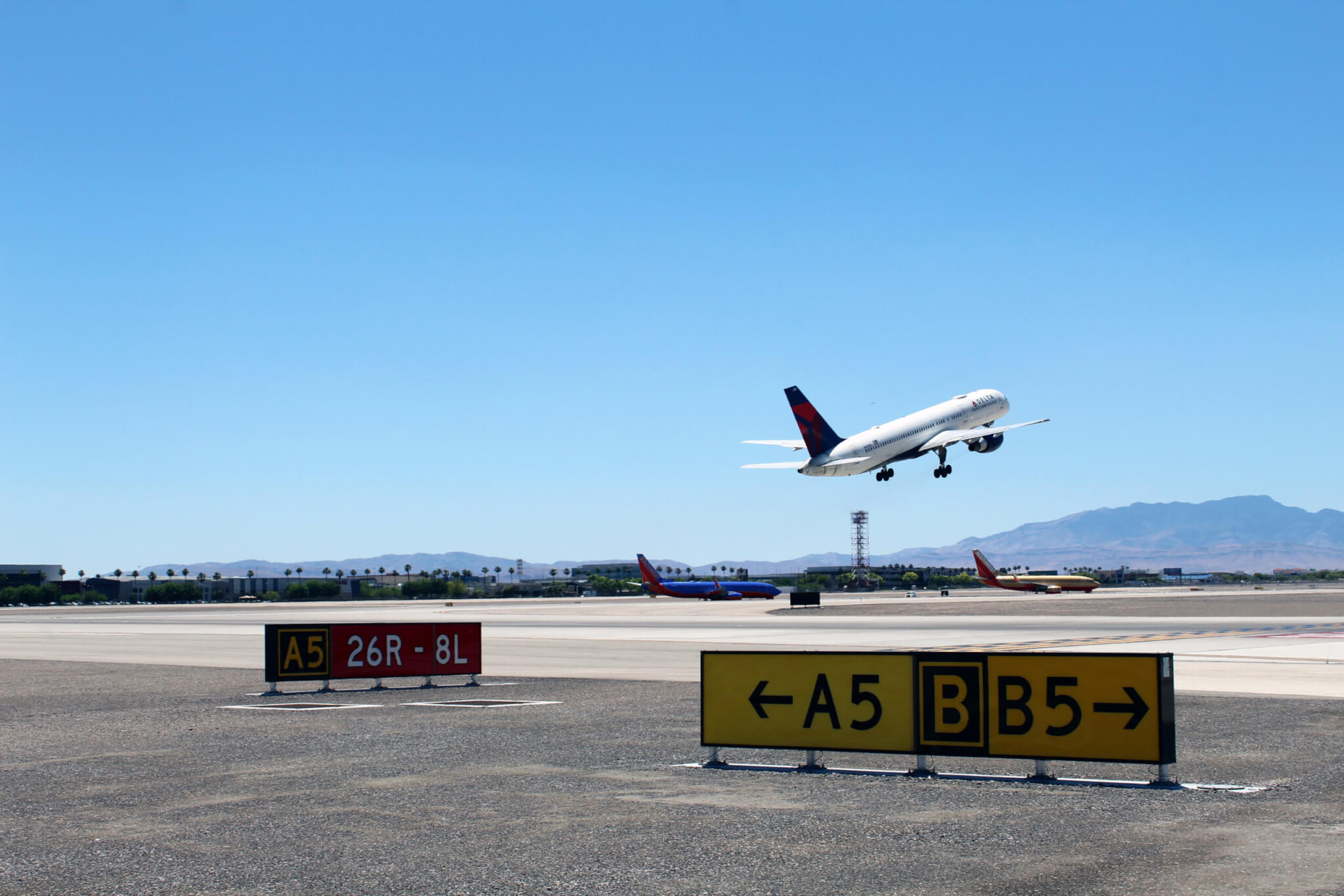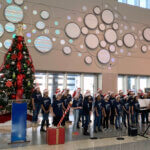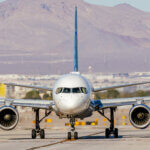At LAS, we’re fortunate that our airport operations aren’t regularly affected by adverse weather conditions like snowstorms and hurricanes; however, we do face some challenges due to the desert heat.
Rising temperatures during the summer months mean the airport must work with airline partners and the FAA to adjust flight operations. As the air density decreases in extreme heat, aircraft require longer runways to achieve takeoff. At LAS, Runway 8L/26R is more than 14,500 feet long, providing the distance some aircraft require during hot conditions. Air traffic controllers also may implement a configuration that routes departing aircraft to the east, allowing them to avoid the mountainous terrain to the west and improve climb performance.
In recent years, LAS has replaced asphalt runway surfaces with concrete, which is more durable and better suited for long-term heat exposure and helps support consistent operations during the hottest summer days.
Inside the terminals, passengers and employees stay cool thanks to state-of-the-art cooling technologies like a building automation system that allows HVAC technicians to quickly and efficiently monitor and adjust temperatures throughout the terminals from centralized computer stations. High-volume, low-speed fans support the HVAC system and improve air circulation in crowded spaces like the busy C Concourse and D gates tram station. The airport also installed new air conditioning units on jet bridges to keep passengers cool during boarding. The bridges are also coated with a reflective ceramic material to reduce heat absorption.
To learn more cooling techniques at LAS, watch the video below.
Beating the heat inside and out at LAS




